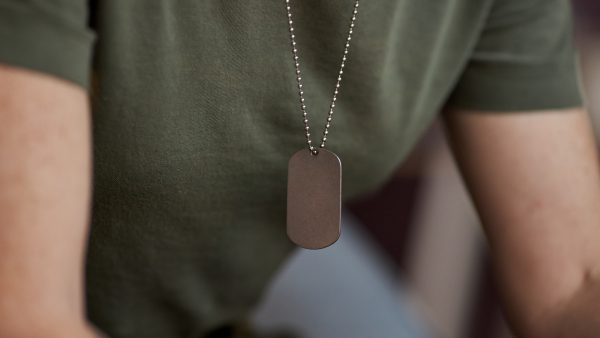Looking for Expert-Level VA Claim Answers?📱Call Us Now! 737-295-2226
Many veterans who experience a traumatic event on active duty develop PTSD–and this traumatic event is often referred to as a PTSD stressor by the VA so let’s talk about PTSD stressor requirements.
It is estimated that veterans are four times (4x) as likely to have or develop PTSD compared to those who didn’t serve in the military–a truly shocking statistic.
It’s reasonable to assume a veteran will pursue a VA disability claim for PTSD at some point, and this post will help you on your path to service connection for PTSD.
- The VA states a stressor involves exposure to death, threatened death, actual or threatened serious injury, or actual or threatened sexual violence.
- When determining the occurrence of PTSD Stressor Requirements to establish service connection for PTSD, VA Raters must consider the following:
- Examples of PTSD combat stressors
- Examples of PTSD non-combat stressors
- How to Prove Your Service Connected PTSD
- PTSD Not Service Connected Example
- VA Stressor Verification Methods
- Buddy Letter for PTSD
- About the Author
The VA states a stressor involves exposure to death, threatened death, actual or threatened serious injury, or actual or threatened sexual violence.
The exposure can be related to:
- Direct exposure
- Indirect exposure, such as learning that a close relative or close friend was exposed to trauma
- Witnessing in-person
- Repeated or extreme indirect exposure to details of the event
For rating purposes, the VA classifies PTSD as either (1) PTSD Combat or (2) PTSD Non-Combat.
You might also like >> How to Prove Your PTSD Non Combat Stressor <<
When determining the occurrence of PTSD Stressor Requirements to establish service connection for PTSD, VA Raters must consider the following:
- PTSD does not need to have its onset as a result of combat (for example, vehicular or airplane crashes, large fires, floods, earthquakes, and other disasters evoke significant distress in most involved persons).
- The trauma may be experienced alone, such as in cases of rape or assault, or in the company of groups of people, such as in military combat.
- Do not limit a stressor to just one single episode; a group of experiences also may affect an individual, leading to the development of PTSD.
- PTSD can be caused by events that occur before, during, or after service.
- PTSD can develop hours, months, or years after a stressor.
Notes for VA Raters:
- The relationship between stressors during military service and current problems/symptoms will govern the question of service connection
- Symptoms must have a clear relationship to the military stressor as described in the medical reports.
- Despite the possibly long latent period, PTSD may be recognizable by a relevant association between the stressor and the current presentation of symptoms.
Reference: For more information on developing claims of PTSD, see M21-1, Part VIII, Subpart iv, 1.A.
Examples of PTSD combat stressors
• Rocket and mortar attacks in Iraq
• Enemy ambush in Vietnam
• IED event in Afghanistan
• Flight deck plane crash in the Gulf War
• Seeing another service-member killed while deployed
Examples of PTSD non-combat stressors
• Military Sexual Trauma (MST), assault or harassment
• Service-member suicide
• Serious car accidents
• Training accidents
• Witnessing a rape
• Serious weather event such as a hurricane
• Death of a family member
>> Click HERE to Learn “How to File a VA Claim for PTSD MST.” <<
How to Prove Your Service Connected PTSD
Stressor verification is a huge deal for VA disability claims for PTSD.
The reality is if the veteran can’t prove their PTSD stressor on an “at least as likely as not” basis, you’ll likely be denied service connection.
This is also referred to as “corroboration” of a claimed stressor.
By definition, “corroborate” means “to support with evidence or authority and make more certain.”
The VA has different rules to assess whether a stressor event needs further verification.
But in our experience, I want to make something very clear to veterans seeking service connection for PTSD: The burden of proof is on YOU to show on an “at least as likely as not” basis that the stressor event happened to YOU.
I literally cannot overstate the importance of this previous statement.
If you can’t get at least one Buddy Letter to support the claimed stressor, there’s a high likelihood you’ll get denied service connection for PTSD.
>> Click HERE for a Buddy Letter for PTSD Example <<
I’ll say that again.
If your PTSD stressor is weak and can’t be verified by at least one other person in-writing, you’ll probably be denied service connection.
Wondering if your PTSD stressor is strong enough?
Here’s a good litmus test: “Did you or did you not fear for your life?“
Thus, if you didn’t fear for your life and the stressor can’t be verified by a buddy, your PTSD stressor event is probably weak, and we recommend the veteran seek additional avenues to service connect their mental health condition.
For example, rather than pursuing a PTSD VA claim with a weak stressor that can’t be verified, why not go for Somatic Symptom Disorder (SSD) aka “Chronic Pain Syndrome with Depression / Anxiety” aka Lifestyle Impact Claim secondary to one or more service-connected disabilities?
You could also pursue a VA claim for Depression or Anxiety as a primary disability, especially if you were diagnosed in-service or shortly thereafter.
I say this because only PTSD has stressors that must be verified—other mental health conditions do not.
Looking for the >> VA PTSD Rating Scale? <<
PTSD Not Service Connected Example
Recently at VA Claims Insider we’ve seen a series of non-combat PTSD denials because the veteran “failed to corroborate that the veteran was actually present and witnessed the non-combat PTSD event.”
For example, a Navy veteran had (1) A medical diagnosis of PTSD and was seeking treatment, (2) A personal statement (lay statement) in support of the PTSD non-combat claim, (3) A Buddy Letter from his spouse explaining that the event on-board the ship did in fact occur.
At first glance, it might seem like this should have been a slam dunk case for non-combat PTSD.
Not so fast.
The VA denied the claim and the veteran didn’t even get a C&P Exam for PTSD.
Why?
Because the veteran “failed to corroborate that the veteran was actually present or witnessed the non-combat PTSD event.”
Whammy.
Here’s the deal veterans…
In ALL PTSD non-combat situations, you MUST have a Buddy Letter from a first-hand witness who can corroborate (aka, verify and validate) that YOU were physically present and that YOU witnessed the stressor event occur.
While a Buddy Letter is not required for PTSD combat stressor verification, at VA Claims Insider, we still recommend you get one if possible.
In the example above, the buddy letter did neither.
It did not confirm that the veteran was physically present for the stressor event occur (veteran was stuck inside a small compartment on-board the ship for hours before being rescued).
Further, the spouse was NOT a first-hand witness to the incident (she was not on-board the ship nor did she witness the incident), and thus, held little “credibility” in the eyes of the VA Rater.
Okay, so what evidence will the VA consider when looking at your PTSD non-combat claim to verify the stressor?
It’s NOT enough to simply confirm that the stressor event occurred.
You must confirm you were there, witnessed the event, and that the event happened to YOU.
>> Click HERE to learn How to Write a VA Buddy Letter <<
VA Stressor Verification Methods
The VA Rater will look at multiple sources to verify a stressor event.
The first evidence source is something called “Primary Evidence.”
Primary evidence is generally considered the most reliable source for corroborating in-service stressors and should be carefully reviewed when corroboration is required.
It is typically obtained from the National Archives and Records Administration (NARA) or Department of Defense (DoD) entities, such as service departments, the JSRRC, and the Marine Corps Archives and Special Collections (MCASC).
In our experience, the JSRRC is a joke BTW…very little evidence of the claimed stressor event is ever verified by a JSRRC stressor review.
Primary evidence includes:
- Service personnel records and pay records
- Military occupation evidence
- Hazard pay records
- Military performance reports
- Verification that the Veteran received Combat/Imminent Danger/Hostile Fire Pay
- Unit and organizational histories
- Daily staff journals
- Operational reports-lessons learned (ORLLs)
- After action reports (AARs)
- Radio logs, deck logs, and ship histories
- Muster rolls
- Command chronologies and war diaries, and
- Monthly summaries and morning reports.
The second evidence source is something called “Secondary Evidence.”
The VA must review the following Secondary Evidence sources critically and carefully for information confirming participation in combat or to otherwise corroborate a claimed in-service stressor when corroboration is required:
- Buddy Letters
- Contemporaneous letters and diaries (maybe you kept a journal?)
- Newspaper articles
Buddy Letter for PTSD
This next section is CRITICALLY important to remember:
The VA may accept a “Buddy Statement” from a fellow Veteran as corroboration of a claimed in-service stressor if the statement is consistent with the time, place, and circumstances of the service of both the Veteran and the fellow Veteran making the buddy statement.
As previously stated, if you can’t get at least one-buddy letter from a first-hand witness who can confirm these facts, you’ll almost certainly be denied service-connection for PTSD non-combat.
A Veteran’s lay testimony (aka your own written statement) alone may, under specified circumstances, establish an in-service stressor for purposes of establishing SC for PTSD if
- PTSD is diagnosed in service, and the stressor is related to that service, or
- The stressor is related to the Veteran’s
- Engagement in combat with the enemy
- Experience as an FPOW as defined by 38 CFR 3.1(y), or
- Fear of hostile military or terrorist activity or duties as a drone aircraft crew member, if a VA psychiatrist or psychologist, or contract equivalent, confirms the
- Claimed stressor is adequate to support a diagnosis of PTSD, and
- Veteran’s symptoms are related to the claimed stressor.
- For the Veteran’s lay testimony (personal statement) alone to establish the occurrence of a claimed stressor,
- The stressor must be consistent with the
- Circumstances, conditions, or hardships of service for claims based on an in-service PTSD diagnosis or FPOW or combat service, or
- Places, types, and circumstances of service for claims based on a fear of hostile military or terrorist activity or duties as a drone aircraft crew member, and
- There must be no clear and convincing evidence to the contrary.
- The stressor must be consistent with the
Credible supporting evidence is evidence that
- Documents the Veteran’s participation in the event
- Indicates the Veteran served in the immediate area and at the time in which the stressful event is alleged to have occurred, and
- Supports the description of the event.
Credible supporting evidence of a stressor may be obtained from sources other than service records.
When reviewing evidence to corroborate a claimed in-service stressor, claims processors must consider the credibility and probative value of the evidence to determine if the stressor is consistent with the circumstances of the Veteran’s service.
Examples of claimed stressors that must be corroborated by credible supporting evidence include, but are not limited to,
- A plane crash
- A severe weather event
- A motor vehicle accident
- Service member suicide
- Witnessing the death, injury, or threat to the physical being of another person caused by something other than hostile military or terrorist activity, and
- Actual or threatened death or serious injury, or other threat to one’s physical being, caused by something other than hostile military or terrorist activity.
Corroboration of every detail is not required.
- Evidence may be sufficient if it implies a Veteran’s personal exposure to the event.
- Evaluate the evidence as a whole to determine whether a stressor is sufficiently corroborated.
Important: While it is incumbent upon each claims processor to review evidence to determine if a claimed in-service stressor can be conceded, stressor concession is ultimately the rating activity’s responsibility.
Well guess what?
The VA often fails in its duty to assist, especially when it involves concession of a stressor event.
At VA Claims Insider, we believe veterans must take control of their own claims, and ensure the necessary evidence gets presented to the VA up-front.
If you rely on the VA Rater to track down information on your behalf, you’re setting yourself up for disaster!
I truly hope these PTSD stressor verification tips help you on your VA claim journey.
Deserve a HIGHER VA Rating? WE CAN HELP.
Join our premier education-based membership program, VA Claims Insider Elite, connect with an expert-level Veteran Coach (VC) within minutes, and finally get the rating you deserve. Click the button below to get started.
About the Author

About VA Claims Insider
VA Claims Insider is an education-based coaching/consulting company. We’re here for disabled veterans exploring eligibility for increased VA disability benefits and who wish to learn more about that process. We also connect veterans with independent medical professionals in our referral network for medical examinations, disability evaluations, and credible independent medical opinions and nexus statements (medical nexus letters) for a wide range of disability conditions.




